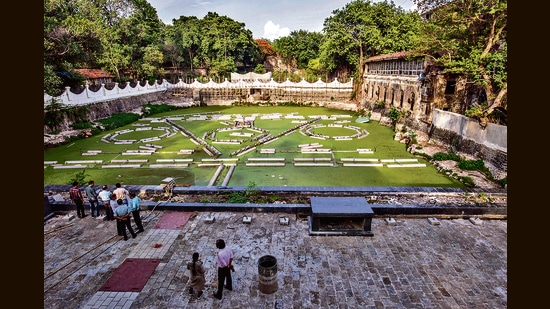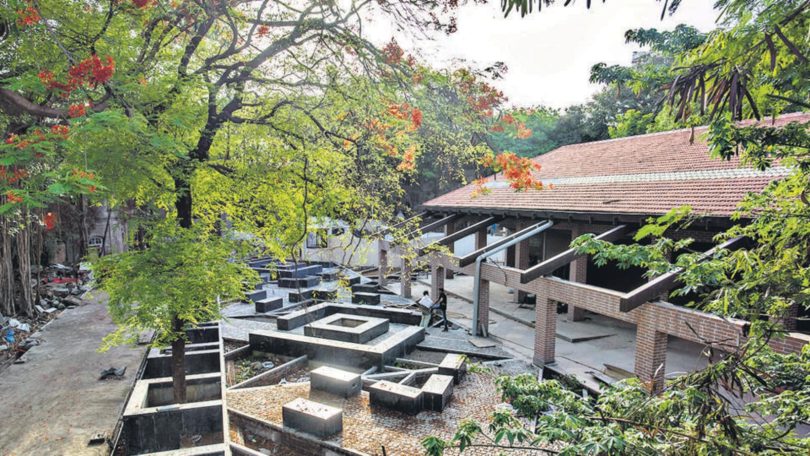[ad_1]
Mumbai: A fountain on a pond, a screen for projection abutting the water body and an amphitheatre — these are some of the elements of the Brihanmumbai Municipal Corporation’s upcoming ₹282-crore textile museum that are fast nearing completion, a site visit by the Hindustan Times revealed.
The BMC on Wednesday said the first phase of the ambitious project being built inside India United Mills No 2 and 3 in Kala Chowki will be ready by September.
The 34,000-square foot compound will also house souvenir stores, a cafeteria, seating areas for visitors and a library besides a museum that will showcase that city’s rich industrial heritage. Mumbai was once home to nearly 130 functioning textile mills in the 19th and early 20th centuries earning it the epithet Manchester of the East.
The project has been divided two phases. In the first phase, which was expected to be completed in February this year, souvenir stores, a cafeteria, an amphitheatre, murals, and an elevated causeway were to be built anew. A musical fountain was also to be built atop the pond that was once used by mill workers in the course of their work.
In the second phase, the existing built structures which are in a dilapidated condition — the mill has been shuttered —were to be restored in order to house a museum and a library.

“Almost 90 percent of the first phase of the textile museum has been completed and the remaining works will be completed before September,” said Sanjay Sawant, head of BMC’s heritage cell, which is implementing the project.
“We are conducting a dry run of the fountain to ensure that there are no technical glitches. The pond on which the fountain will come up was once used by mill workers. The project has been designed in such a way that it will reflect the mood of the past. The history of that time will be showcased on a screen [constructed behind the pond] through images and jingles for which we have just received approval from the authorities,” Sawant added.
“This project included a lot of re-engineering works which took us a longer time to complete. Also, the process of handing over these lands to the municipal body took many years as several government agencies were involved,” Sawant said.
The BMC has appointed a team of from the Sir J.J. School of Arts and Architecture to consult on the project. Sculptor Deepak Paunikar has been tasked with designing the gates and grills as well as other work involving iron within the premises.
“The gates, grills and lighting poles have been created by using cast iron. We have maintained the design theme commonly seen on Paithani sarees [emergent from Maharashtra’s Aurangabad district] on these cast iron structures to reflect the identity of the state,” Paunikar said.
The museum will include items of machinery from the 19th and 20th century, Sawant said.
The first phase of the museum has cost the BMC ₹32 crore, of which ₹22 crore was earmarked for the fountain itself. Entry to the museum will be a ticketed affair, the BMC confirmed, but added that the pricing has not been decided upon as yet.
The mill began in 1869 as a workshop for pressing vegetable oils and changed several owners before it was nationalised by Indira Gandhi in 1974, is one of a handful of state-owned mills.
“[Messrs Aggarwal and Co] ran the mills profitably until the 1960s as Indu Fabrics – a brand ubiquitous after Independence… The entire India United group of mills were subsequently nationalised by Indira Gandhi into the National Textile Corporation (NTC) in 1974. By the early 2000s these and other private textile mills in Mumbai were wound down,” historian and BMC advisor Shekhar Krishnan wrote in a blogpost.
In 2009, the National Textile Corporation Limited (NTCL) handed over the mill compound to the civic body under an Integrated Development Scheme (IDS). However, work on the museum began after the BMC civic standing committee’s nod in 2019.
[ad_2]
Source link








